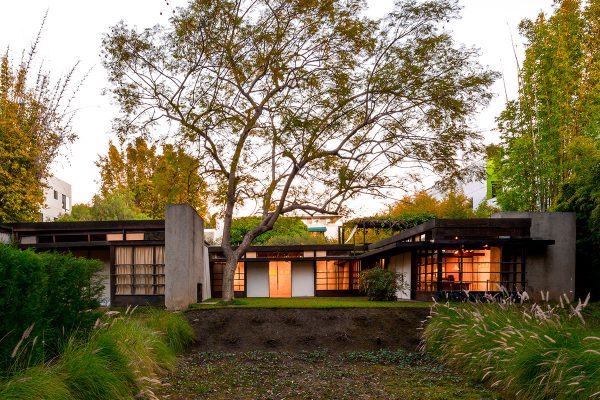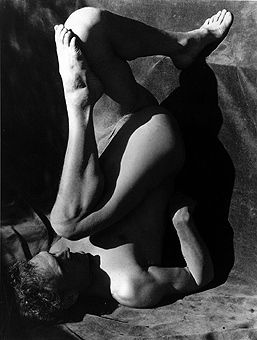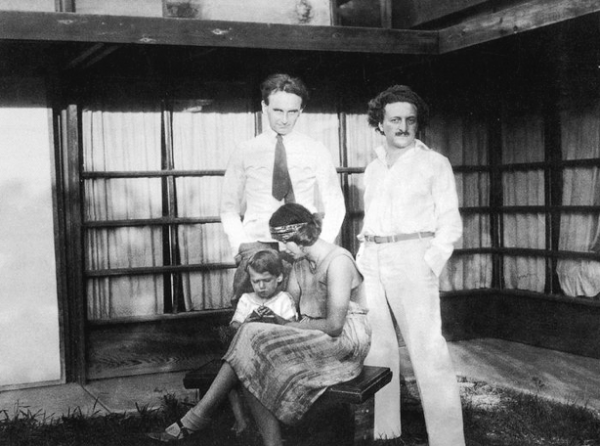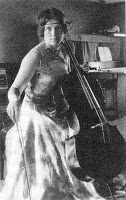
The Schindler House on North Kings Road is everything everybody says – a 20th century masterpiece of early modern architecture. But it wouldn’t be out of line to think of the home built in 1922 as the original love shack.
Its sweetly decadent creators, Austrian-born architect R.M. Schindler and his activist, avant-garde wife Pauline, wanted a communal, free-flowing home. They craved a salon-like atmosphere, a place with open spaces filled with artistically minded intellectuals, actors and agitators. His radical design (for the time) made the transition easy from being a home into a temple for all things bohemian in a still young Los Angeles.
There were wild Sunday afternoon parties with nearly naked Balinese dancers in the courtyard, for example. “The Kings Road house was designed for flirting,” Vanity Fair magazine says. “There was very little privacy and very few secrets. It was built for swingers.”
Not that there wasn’t proper intellectual and political discourse for balance. The West Hollywood home served as a utopian haven for some of the 20th century’s most progressive thinkers and a mecca for leftist politics in Los Angeles, according to the Southern California Architectural History website. Guests included photographer Edward Weston, composer John Gage, psychoanalyst Anna Freud, art collector Galka Scheyer, even Samson DeBrier, a self-described “celebrity warlock.”
The Schindlers wouldn’t have had it any other way. They arrived in L.A. shortly after he fell in love with her at the founding ceremony of the American Communist Party in 1919 in Chicago, where he worked for Frank Lloyd Wright. R.M. designed a house arranged as two interlinking apartments so it could be shared with another couple at all times. The acclaimed result was a “perfect blend of Yosemite camp, Indian pueblo and European modernism.”
Sunday Parties for Free-Thinkers
At the very least, the Schindlers were sophisticated social and sexual progressives. They cultivated 1920s-era hipsters, musicians, socialists and reformers of all types – nearly all of whom were underemployed. The number of infamous personalities passing through the house was extraordinary. Friends who were avant-garde in the arts, education and politics were welcomed during Sunday open houses, which characteristically were wild.

The most memorable events during these parties were interpretive dancer John Bovingdon’s performances, when he often pranced nude in the garden, re-enacting symbolic rituals from Bali with his bare-breasted female companion.
His “Dance of Evolution” was a specialty. Beginning together with his naked-breasted female partner as a mass of quivering protoplasm on the grass in the patio, the dance developed through various stages of lower animal forms to the ultimate human. The Harvard-educated Bovingdon later became an economic analyst for the U.S. government. Life magazine reported that he was fired in 1943, though, for having a “record and career as a ballet dancer,” in the words of the Texas congressman who denounced him.
Open houses, as they were called, attracted the arty intellectuals of post-World War I. The talk was not chit-chat but about revolutionary ideas in all fields. “Idealism, art, outrage, music and manifestos filled the warm, fragrant nights,” Vanity Fair notes. “The Kings Road house in 1925 was the center of L.A. cool.”
Uniquely at the time, the Schindler house handled gatherings of any size and type because of its fluid architecture. Innovative features like integrated exterior and interior spaces and sliding glass walls supported what was then a radical way of life, the Los Angeles Times notes.
“With its rooftop canvas-covered sleeping porches and bare cement floors, it resembled a roughshod cabin created to celebrate free love, fresh air and a solemn dedication to an anti-bourgeois libertarianism.”
Much of the free love involved the Schindlers’ open marriage, which certainly flaunted convention. R.M. “did not respect the institution of marriage and behaved accordingly,” according to the Kingsroadhouse blog. Frank Lloyd Wright once described Schindler as an “incorrigible bohemian.” He reportedly flirted or slept with every woman, married or not, of every client, friend and associate he ever met.
Their marriage was not a peaceful one. Pauline had wanted to consider it a legal formality to satisfy her family, but was much more conventional in her response to it than she imagined she would be. She left R.M. in 1927.

Famous Guests / Residents
Everyone came for the parties but some stayed for months and sometimes years. With three individual studios designed for two couples, the house was meant for communal living. Along with Schindler, who lived there until his death in 1953, others resided in the guest studios.

Sometime in 1924, the Schindlers invited R.M.’s fellow architectural student and friend from Vienna, Richard Neutra and his wife Dione, to share their new world in L.A. on Kings Road. It was a disaster in the making, given the Neutras’ naiveté and prudishness. After four years, their fractious personal and business relationship ended and the Neutras left.
The house “served as a vibrant salon, a creative milieu, a constant waystation primed to shelter audacious ideas and intriguing personalities,” according to the Schindlerlab website.
Galka Scheyer, art impresario and Pasadena Art Museum donor, lived in the guest studio in 1927 and 1931. After R.M. died, novelist Aldous Huxley moved in, the same year of his first LSD trip. Another famous Kings Road novelist, Theodore Dreiser, took up residence in 1935.
Others, and the year they took up residence, were screenwriter Dudley Nichols, the first person to refuse an Oscar, 1936; composer John Gage, 1934; photographer Edward Weston, 1930; journalist Ana Louise Strong, an ardent supporter of the early Soviet Union, stayed there for three months while under contract as a screenwriter for MGM.

Thanks, Bob, great stuff–as always!
The design in a true masterpiece worthy of all praise & accolades … And then sum. However, I don’t think the design was so heavily influenced by the desire to have “naked parties” It may be intellectual rationalization for building a masterpiece … But I don’t think the actual design was made or radically changed for “naked parties” Lot’s of buildings are repurposed for other uses quite successfully. This house wasn’t repurposed until it became a museum. It was always livable, naked party throwers or prudes alike would get the same joy in living in a Masterpiece. But … It… Read more »
Nice green lawn in doughty SoCal 😉
droughty
Great piece. Good read.